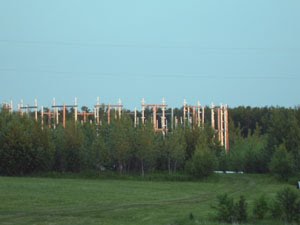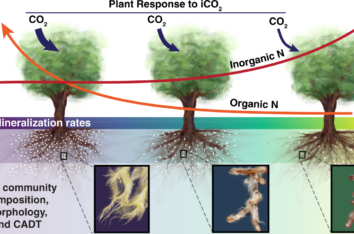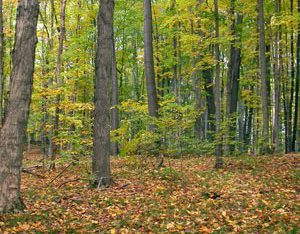Collaborator
Kurt S. Pregitzer, School of Forest Resources & Environmental Science, Michigan Technological University, Houghton, Michigan 49931
Abstract
A major uncertainty in predicting ecosystem response to a changing environment is the extent to which increases in plant and ecosystem productivity will be sustained as CO2 continues to accumulate in the Earth’s atmosphere. For example, there is uncertainty regarding the specific ways in which higher levels of tropospheric O3 will interact with rising CO2 to alter plant growth, and how they might cascade through terrestrial ecosystems to impact decomposer communities in soil, which further control the flow of energy and nutrients in forest ecosystems. This project seeks to understand the mechanisms controlling ecosystem response to elevated CO2 and O3, and it is based on the premise that plant-microbe interactions in soil mediate key feedback mechanisms controlling ecosystem response to environmental change. The project centers on a conceptual model and coordinated series of hypotheses that link production and biochemical changes in plant litter to physiological changes in soil microbial communities. Each hypothesis is being tested at the FACTS II FACE experiment in Rhinelander, Wisconsin, a free-air release experiment capable of addressing how CO2 and O3 will interact to alter the structure and function of forest ecosystems. Previous results demonstrate that increases in plant growth under elevated CO2, and its diminishment by elevated O3, have altered fine root production and biochemistry, substrate availability for microbial metabolism, the composition of soil fungal communities and the formation of soil organic matter. This current project addresses key questions that remain unanswered: Why has elevated O3 accelerated fine root mortality in aspen, while net primary productivity has declined? Will this response be consistent across ecologically distinct communities, or will it diverge among community types? Why has greater below ground litter production under elevated CO2 elicited a disproportionately greater increase in cellulose degradation by soil fungi, when there is no change in fine root biochemistry? How has fine root and microbial metabolism changed such that the greatest soil CO2 flux is now occurring in the CO2 and O3 combination treatment? Will plants growing under elevated CO2 accumulate more N over time? Will O3 negate this response? This project will answer these questions and will provide insight into the mechanisms by which altered plant growth and tissue biochemistry under elevated CO2 and O3 will modify soil microbial communities and the ecosystem-level cycling of C and N in ecologically and economically forests in the Upper Great Lakes region.




July 7, 2024
Hi there, just wanted to mention, I liked this article.
It was funny. Keep on posting!